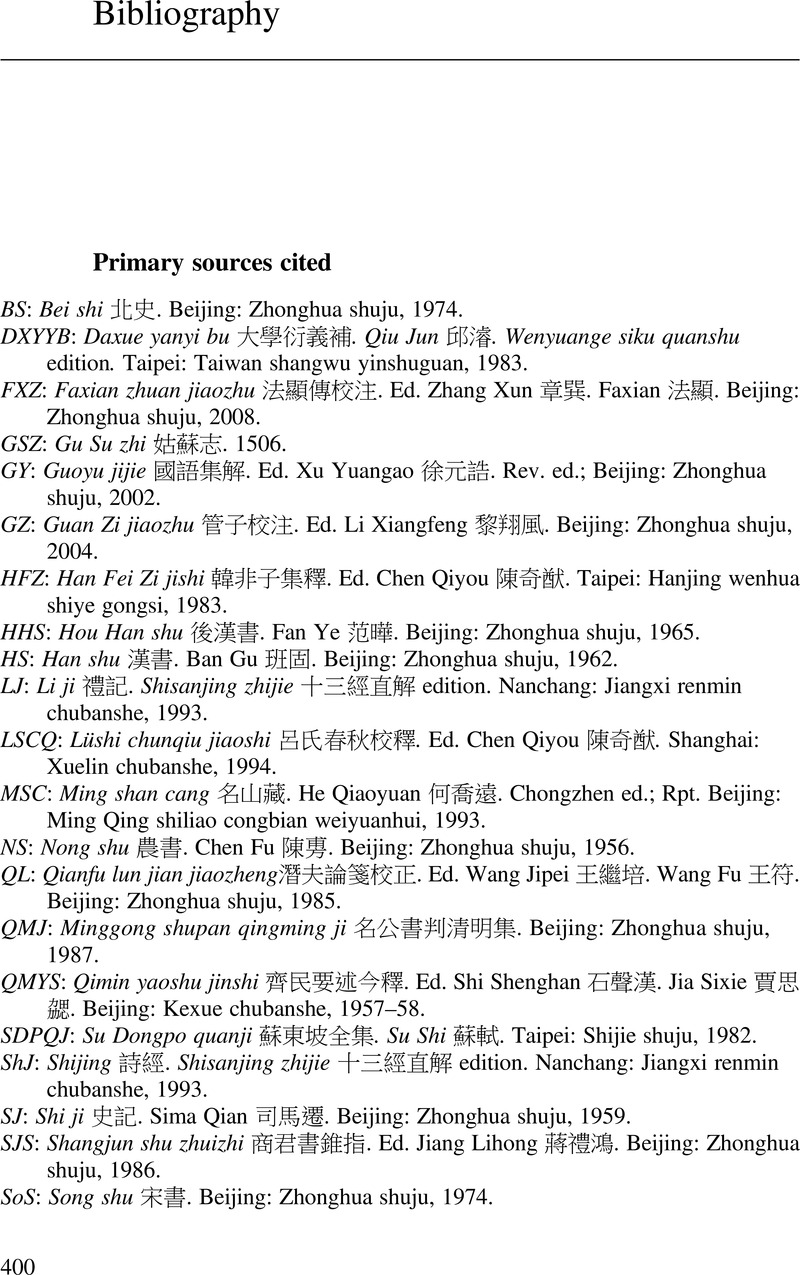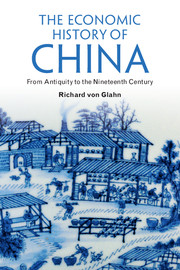Book contents
- Frontmatter
- Dedication
- Contents
- List of figures
- List of maps
- List of tables
- Acknowledgments
- Introduction
- 1 The Bronze Age economy (1045 to 707 BCE)
- 2 From city-state to autocratic monarchy (707 to 250 BCE)
- 3 Economic foundations of the universal empire (250 to 81 BCE)
- 4 Magnate society and the estate economy (81 BCE to 485 CE)
- 5 The Chinese-nomad synthesis and the reunification of the empire (485 to 755)
- 6 Economic transformation in the Tang-Song transition (755 to 1127)
- 7 The heyday of the Jiangnan economy (1127 to 1550)
- 8 The maturation of the market economy (1550 to 1800)
- 9 Domestic crises and global challenges: restructuring the imperial economy (1800 to 1900)
- Bibliography
- Index
- References
Bibliography
Published online by Cambridge University Press: 05 March 2016
- Frontmatter
- Dedication
- Contents
- List of figures
- List of maps
- List of tables
- Acknowledgments
- Introduction
- 1 The Bronze Age economy (1045 to 707 BCE)
- 2 From city-state to autocratic monarchy (707 to 250 BCE)
- 3 Economic foundations of the universal empire (250 to 81 BCE)
- 4 Magnate society and the estate economy (81 BCE to 485 CE)
- 5 The Chinese-nomad synthesis and the reunification of the empire (485 to 755)
- 6 Economic transformation in the Tang-Song transition (755 to 1127)
- 7 The heyday of the Jiangnan economy (1127 to 1550)
- 8 The maturation of the market economy (1550 to 1800)
- 9 Domestic crises and global challenges: restructuring the imperial economy (1800 to 1900)
- Bibliography
- Index
- References
Summary

- Type
- Chapter
- Information
- The Economic History of ChinaFrom Antiquity to the Nineteenth Century, pp. 400 - 447Publisher: Cambridge University PressPrint publication year: 2016



